Cannondale has given its cross-country race bike, the Scalpel, a refresh for 2024. The new bike's updated frame sees increased suspension travel, geometry designed for the race courses of today, tweaked specs and lightweight builds.
This is the eighth generation of the Scalpel, a bike that has been in Cannondale’s line-up for 22 years. Cannondale sees it as a refining of the existing design rather than a complete reinvention.
As we’ve seen in the past few years, cross-country racing has become increasingly gnarly, with race tracks littered with rocks and roots, drops and jumps.
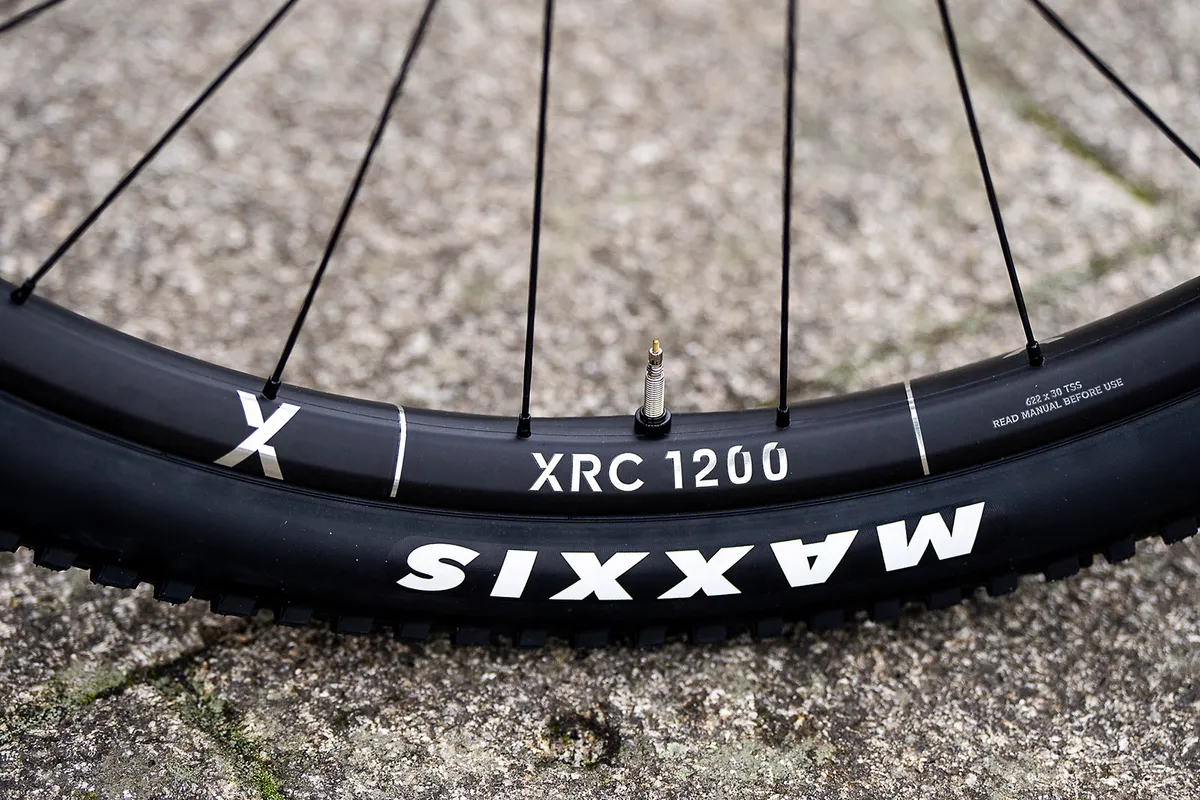
To reflect this, there has been a trend of boosting travel on XC bikes to 120mm, while ensuring it’s not only trail bikes and enduro bikes that get the long, low and slack treatment.
Cannondale has not been left behind, with the new Scalpel ticking all of the boxes for a modern XC race bike.
Cannondale says it wanted the new Scalpel to be fun to ride – and that contributed to its design.
While 120mm travel used to be the preserve of downcountry bikes, Cannondale seems to be erring away from that as a sub-genre of mountain bikes.
This is, the brand says, because the pressures that make downcountry bikes light and fast are the same pressures their XC racers face – so, in essence, they’re the same things.
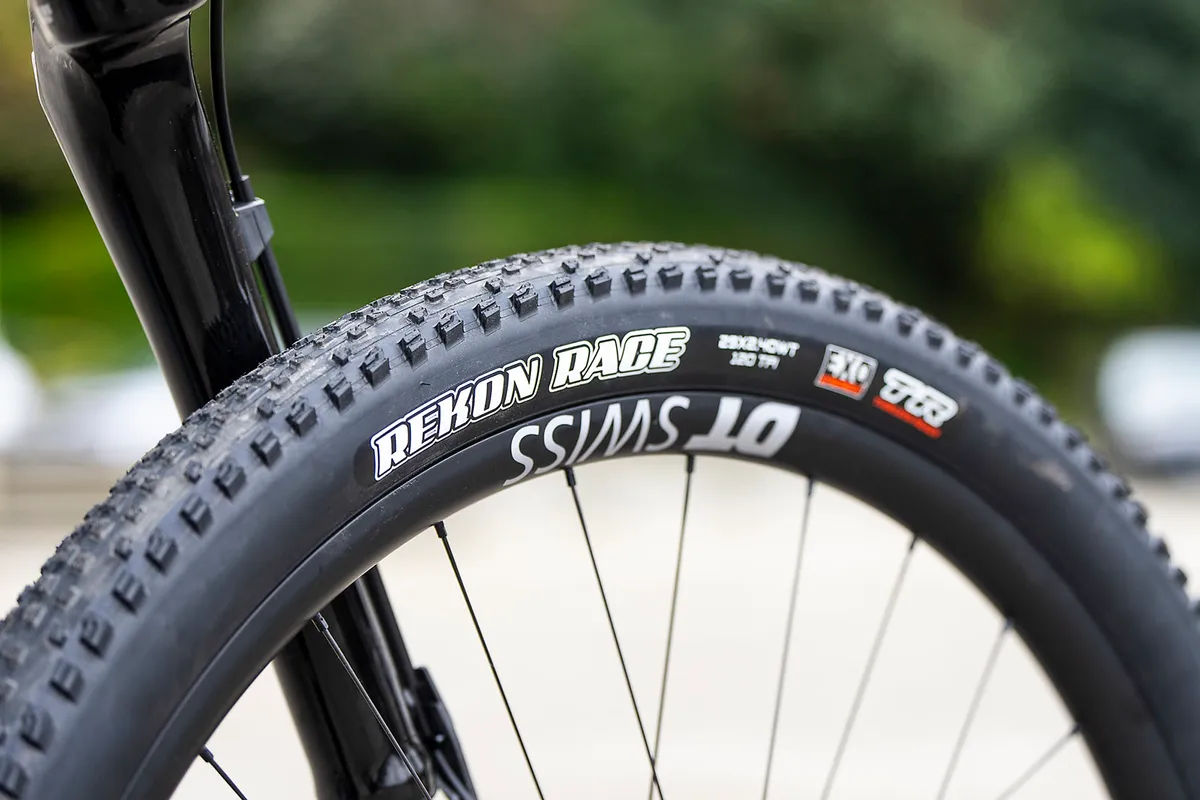
The distinction comes when you look at lightweight trail bikes. Here, you might be looking at bolstering frame stiffness, or sacrificing a bottle cage mount in order to increase standover height.
In essence, then, the Scalpel should both be sorted on the race track and fill that need for a downcountry bike in your garage, if you’re the type to take a lightweight, full-suspension bike out on the trails.
As such, there’s no new Scalpel SE here; that downcountry version of Cannondale's XC racer is done and dusted.
How does it ride? Check out Tom Marvin's Cannondale Scalpel first ride review.
Cannondale Scalpel frame and suspension details
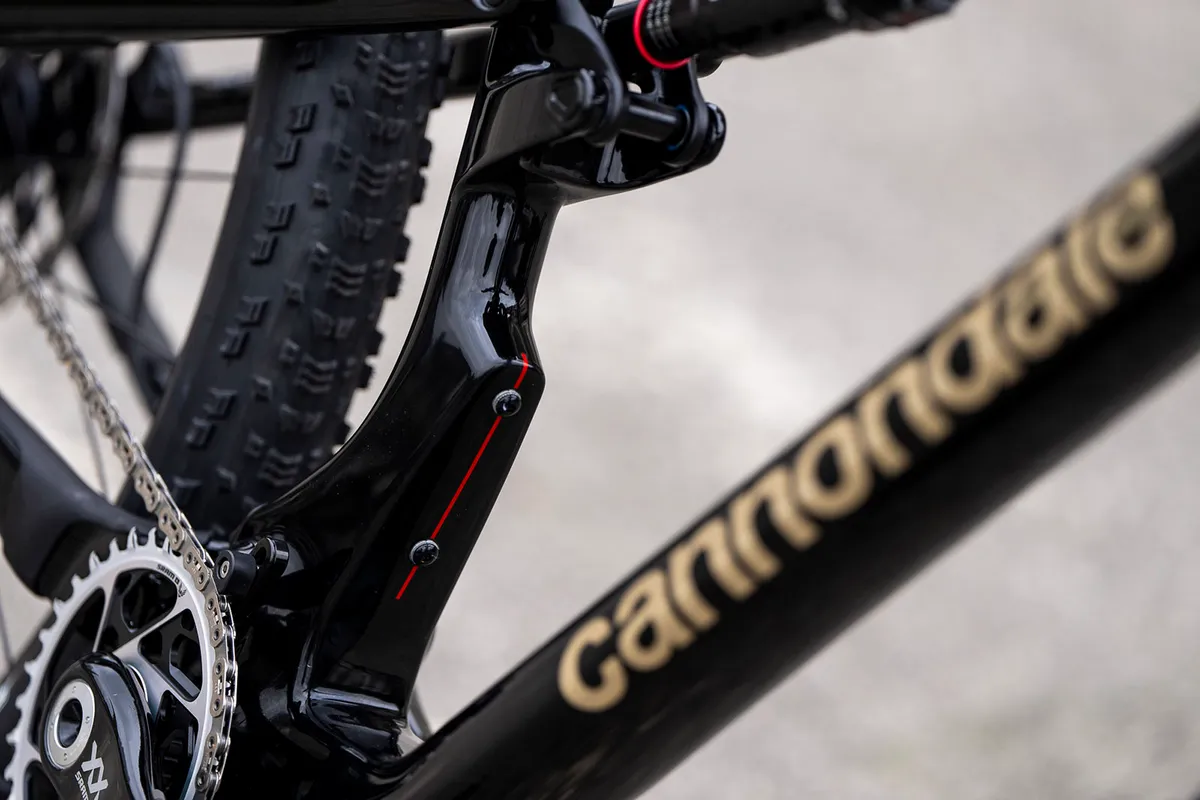
Let’s start with the obvious. The Scalpel is now a 120mm-travel mountain bike that uses a flex-stay ‘FlexPivot’ suspension layout.
Looking closely at the chainstays, you see a flattened section of carbon. It’s here that the flex is introduced into the rear triangle.
This flex replaces where a pivot might be on a ‘regular’ Horst-linkage design, being both lighter and stiffer, as well as maintenance-free. It’s no wonder such arrangements are ubiquitous on XC bikes these days.
In addition to the FlexPivot, Cannondale has used its Proportional Response kinematics, meaning individual-sized frames have their own suspension layout.
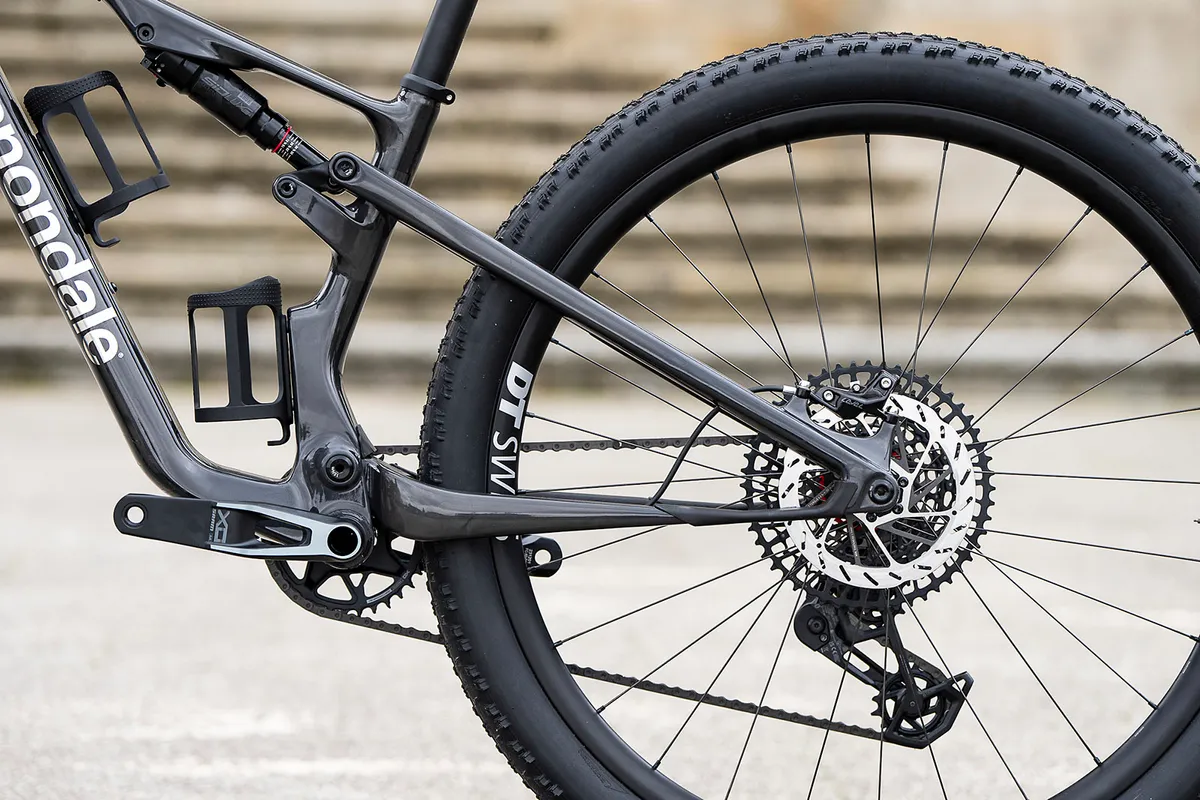
This is because, Cannondale says, differing rider heights give different centres of gravity, requiring individual suspension layouts to ensure a consistent feel across the bikes.
The brand claims this gives the new Scalpel bikes the best traction, braking and pedalling performance across the size range.
Cannondale’s data acquisition suggested most of a rider’s pedalling was done with the suspension at 20-40 per cent of its travel range, around the sag point. Therefore, here the anti-squat, in the higher gears, is over 100 per cent, giving the bike a snappy feel.
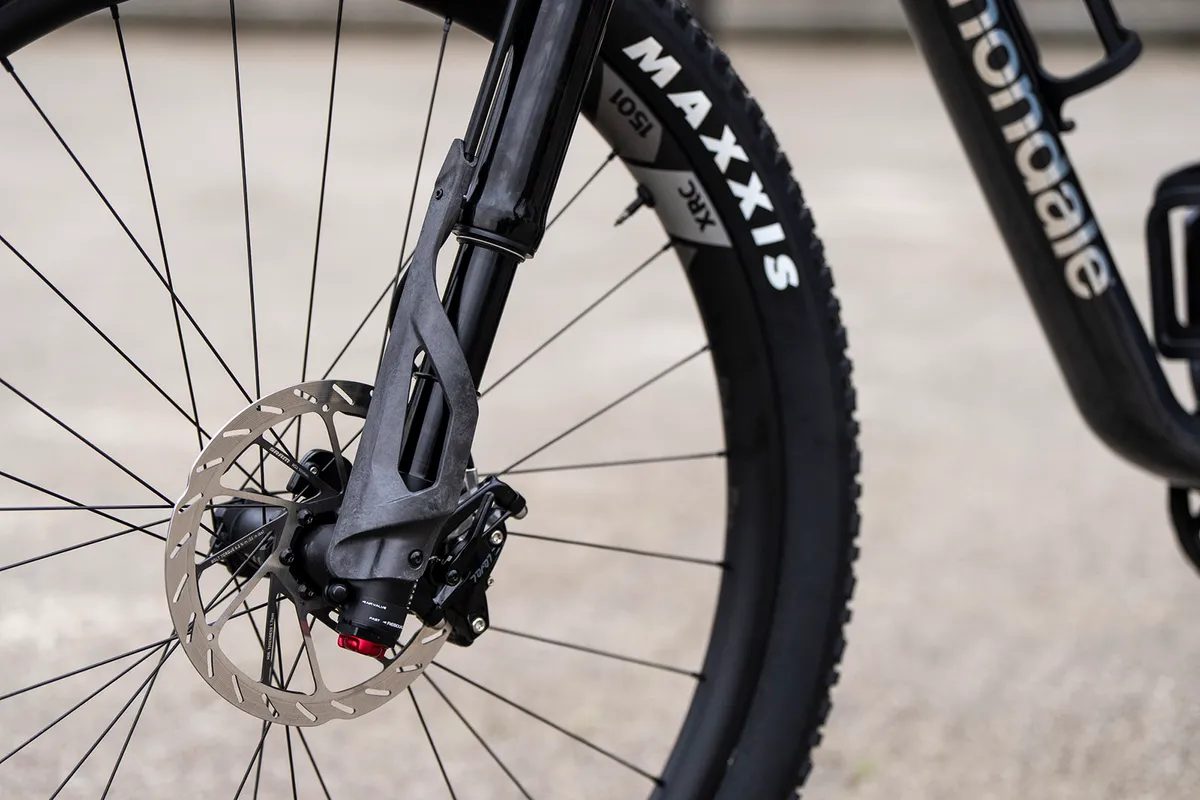
When you get deeper into the travel, over the chatter, the anti-squat drops off, enabling the suspension to do its job well, introducing less feedback via the pedals for a smoother ride.
A TwistLoc barrel is on the bar to lock the shock and fork, though US buyers will only get a shock lockout.
The shock’s lockout cable is run neatly through the top tube, keeping it out of sight.
Tried-and-tested tubes
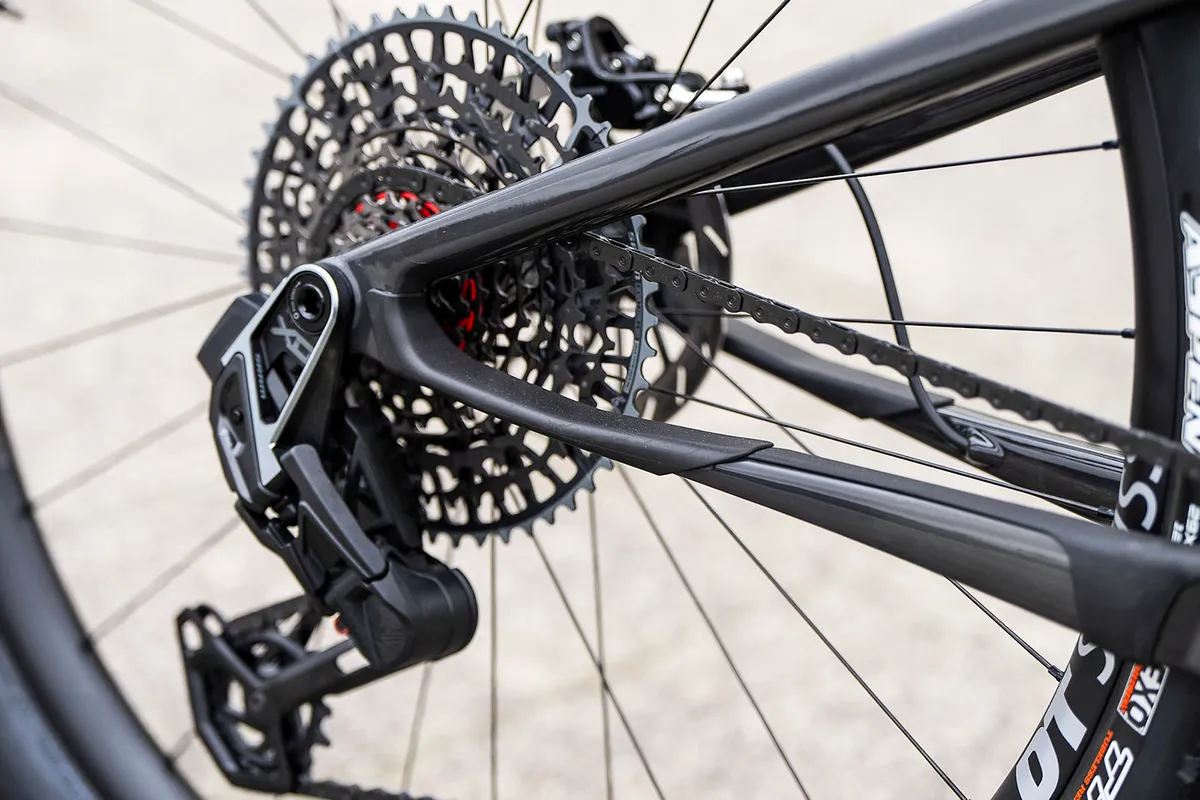
The surface area of the frame’s tubes has been reduced to shave a bit of weight. However, the brand also needed to hit its head tube and bottom bracket shell stiffness targets.
As such, while the surface area has decreased, Cannondale has engineered in tube shapes and forms that ensure the Scalpel maintains rigidity in the right places.
Notably, you get a proper threaded BB shell, which is excellent.
The rest of the frame follows plenty of best practices – two sets of bottle bosses on all frame sizes (short riders get just as thirsty as taller ones), an internal clamping mechanism to keep the internally routed cables and hoses quiet, as well as the usual frame protections.
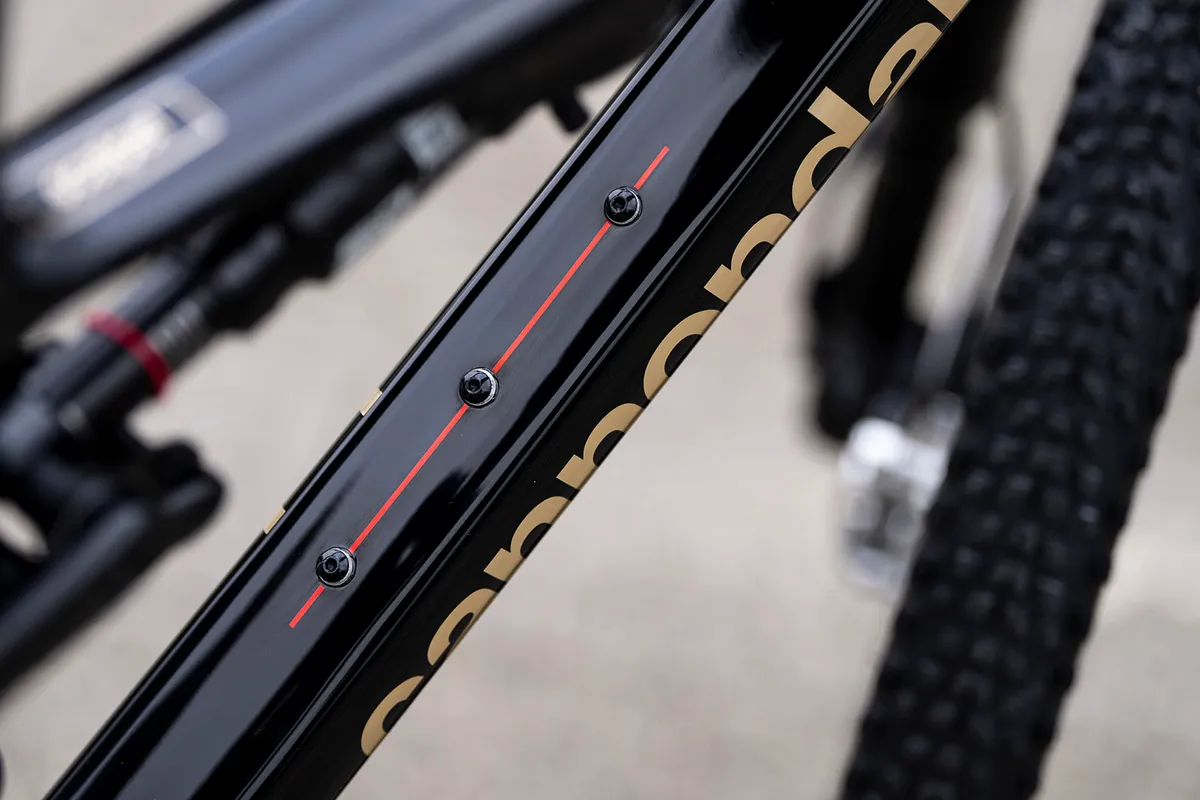
The cables, for the rear brake, lockout and – depending on build – gears and/or dropper, go through the headset.
However, the upper bearing is a 1.5in example (with extra weather sealing for increased durability), which Cannondale claims most XC brake levers can be passed through. This should make maintenance easier.
Durability is also improved over a smaller bearing, but it’s worth noting the top bearing is thinner than one you’d find on the bottom.
Cannondale Scalpel geometry
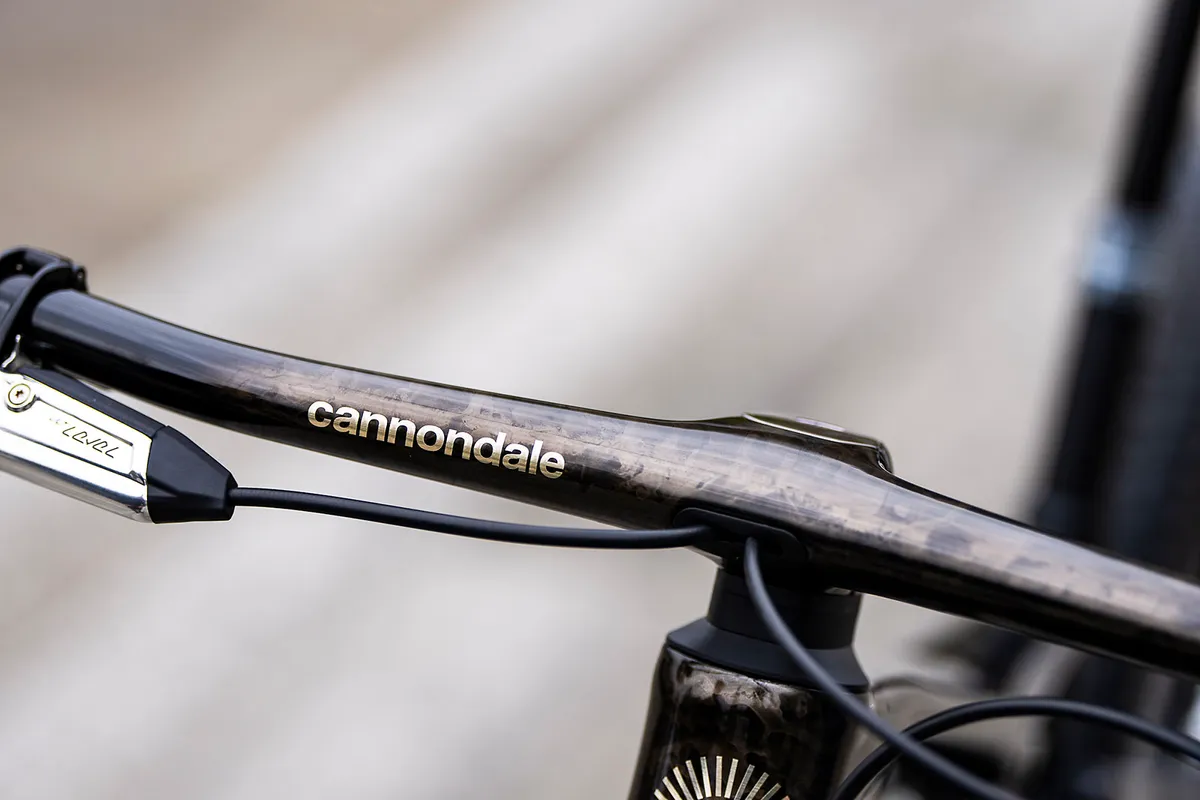
In conjunction with the fine-tuning of the suspension, the Proportional Response brief extends to the bike’s geometry.
Cannondale has assumed riders have a lower and more forward centre of gravity on modern bikes, which has prompted it to give the bike longer chainstays.
This helps, especially with taller riders, who should have a more balanced bike, front to rear, compared to the older version.
Chainstays vary with bike size, too.
Additionally, Cannondale has dropped the bottom bracket by two millimetres and steepened the seat angle by one degree.
The head angle slackens by around one and a half degrees, while reach has grown 10-15mm for a given size.
| Size | Small | Medium | Large | X Large |
|---|---|---|---|---|
| Reach (mm) | 425 | 450 | 475 | 510 |
| Stack (mm) | 595 | 595 | 604 | 613 |
| Head tube angle (degrees) | 66.6 | 66.6 | 66.6 | 66.6 |
| Seat tube angle (degrees) | 75.5 | 75.5 | 75.5 | 75.5 |
| Seat tube length (mm) | 380 | 400 | 445 | 500 |
| BB height (mm) | 334 | 334 | 334 | 334 |
| Wheelbase (mm) | 1146 | 1175 | 1208 | 1251 |
| Chainstay (mm) | 434 | 438 | 442 | 446 |
| Top tube (mm) | 579 | 597 | 625 | 669 |
| Standover (mm) | 736 | 744 | 752 | 763 |
Cannondale Scalpel componentry
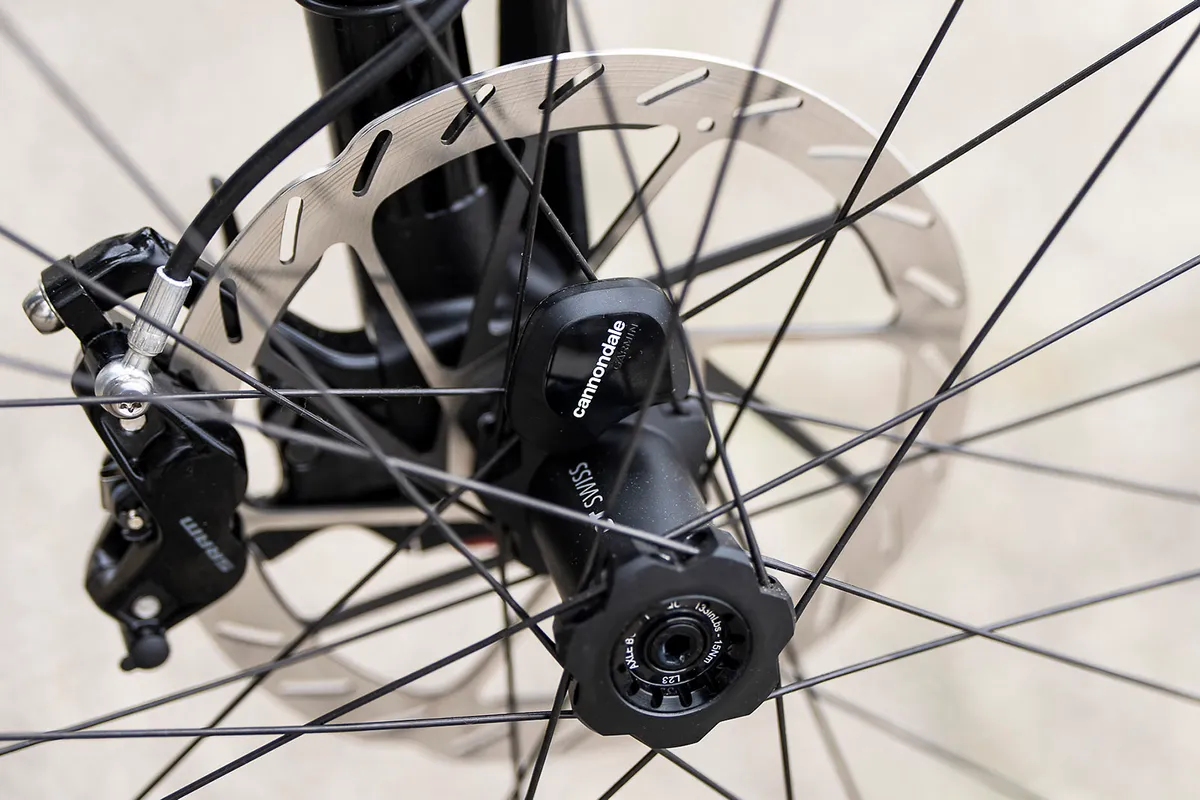
Cannondale has long fitted its Lefty fork to its bikes. This is a single-legged fork, built with an upside-down construction.
This means the stanchion (the narrower tube that slides into the wider chassis of the fork) sits by the wheel, sliding up into the main body of the fork.
There are a number of reasons Cannondale forges ahead with the Lefty.
Chassis stiffness is, unsurprisingly, stiff. Its internals are also a little different, with the stanchion moving over sliding bushings and needle bearings.
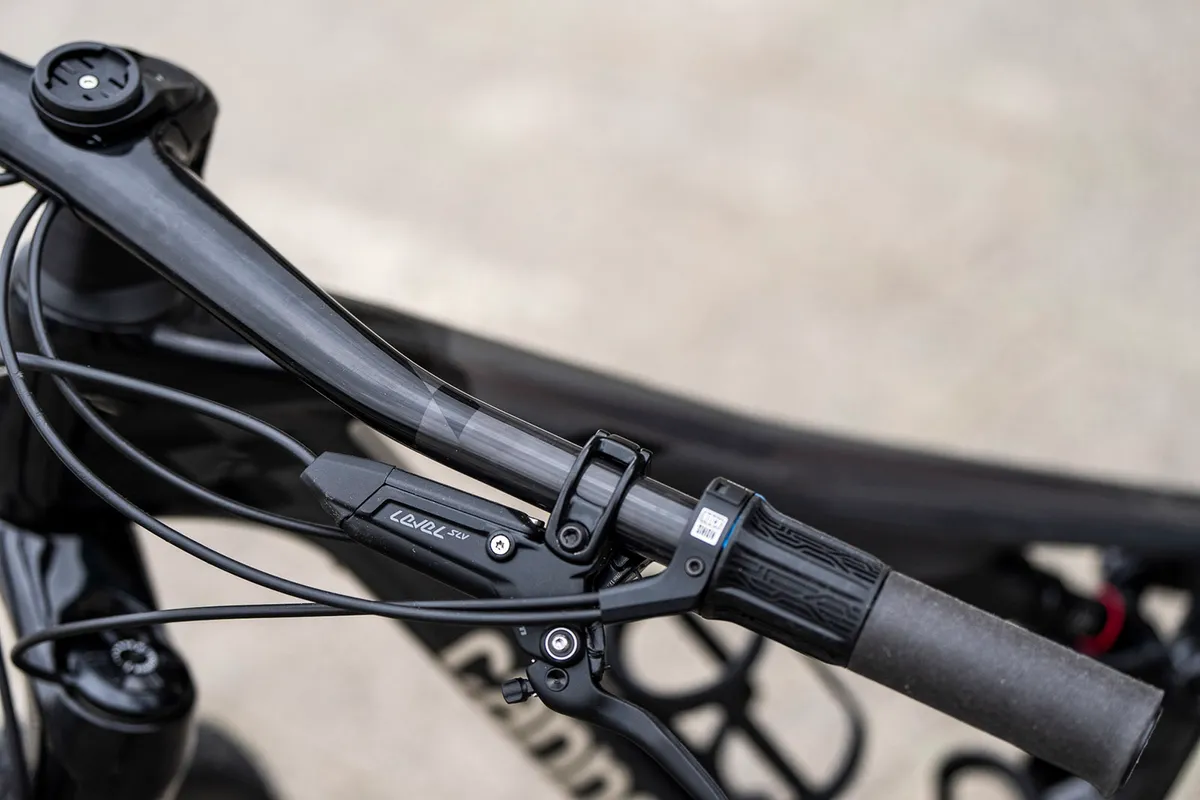
This, Cannondale claims, makes the fork smoother when you’re braking down steep terrain, because there’s less binding friction going on with this construction, which aids comfort and grip.
Cannondale also says the low-speed compression circuit is more independent from the air spring, so the fork can more easily be set up to prevent diving under braking, while still being supple, supportive and smooth.
This 120mm version is offered in carbon and alloy constructions.
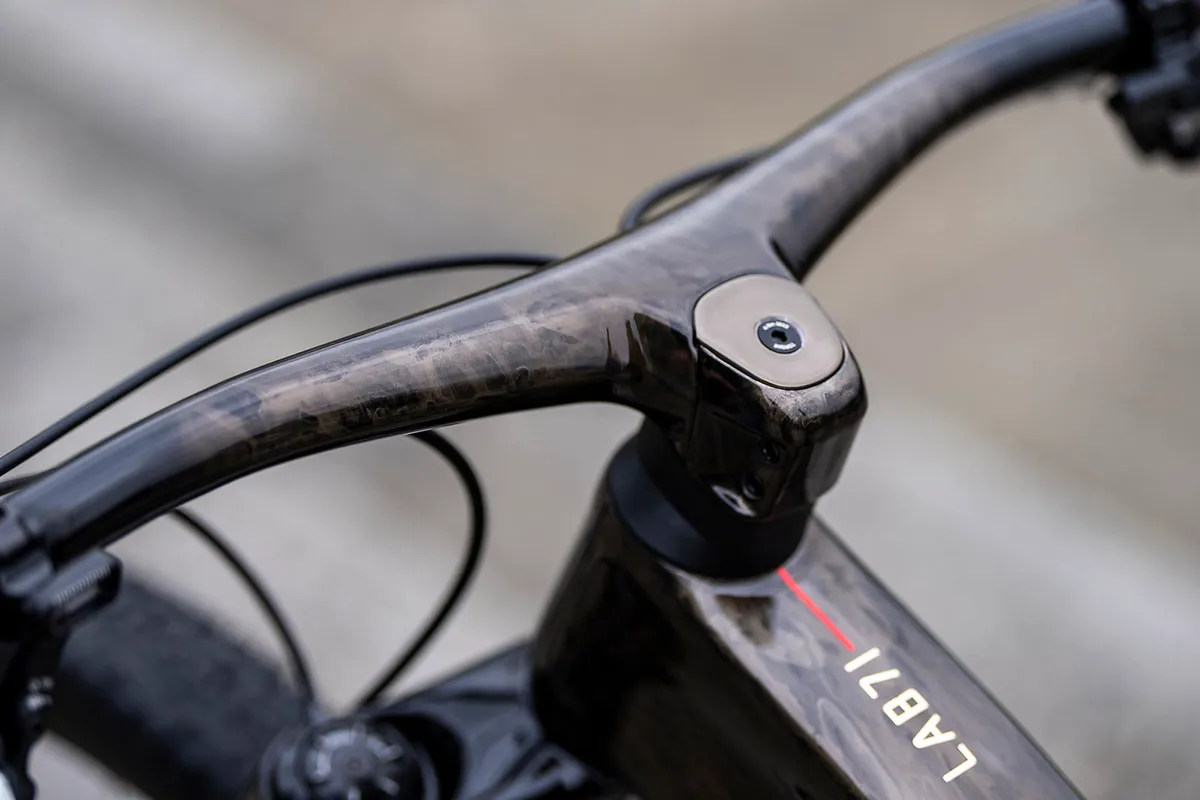
Cannondale has also jumped onto the integrated bar and stem train, with its own version.
It weighs a claimed 235g, including the stem top cap and associated parts. It has a moderately neutral roll and sweep, based on the preferences of both the brand's German and American office staff, and is colour-coordinated on the bikes it’s specced on.
Cannondale designed the integrated bar, because apparently racers like the aesthetic and the integrated design makes sense on the race course.
However, the brand says it wanted to make versions that "suck a lot less" than others on the market.
Lab71
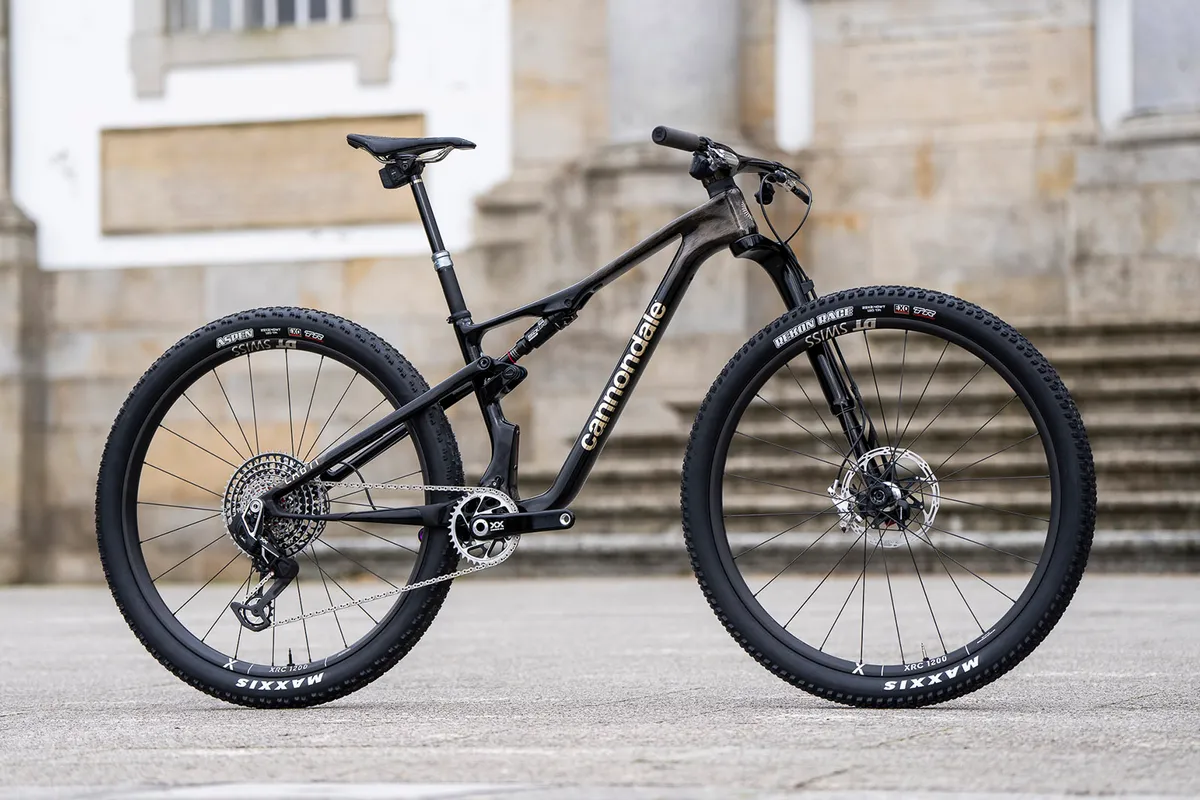
Many brands have a range-topping halo product or nomenclature in their line-up and Cannondale is no different with its Lab71 bikes.
The Scalpel Lab71 sees high-end ‘Series 0’ carbon fibres being used – MR70 and M40 XC.
These frames, including hardwear, come in at 1,780g for a Medium, which is 20g lighter than the previous generation – notable, given these are much ‘larger’ frames.
The Lab71 frames are around 300g lighter than the Series 1 carbon fibre frames found on the other bikes in the Scalpel line-up, and give an overall weight of 10.4kg for the full bike (Medium).
Cannondale Scalpel builds
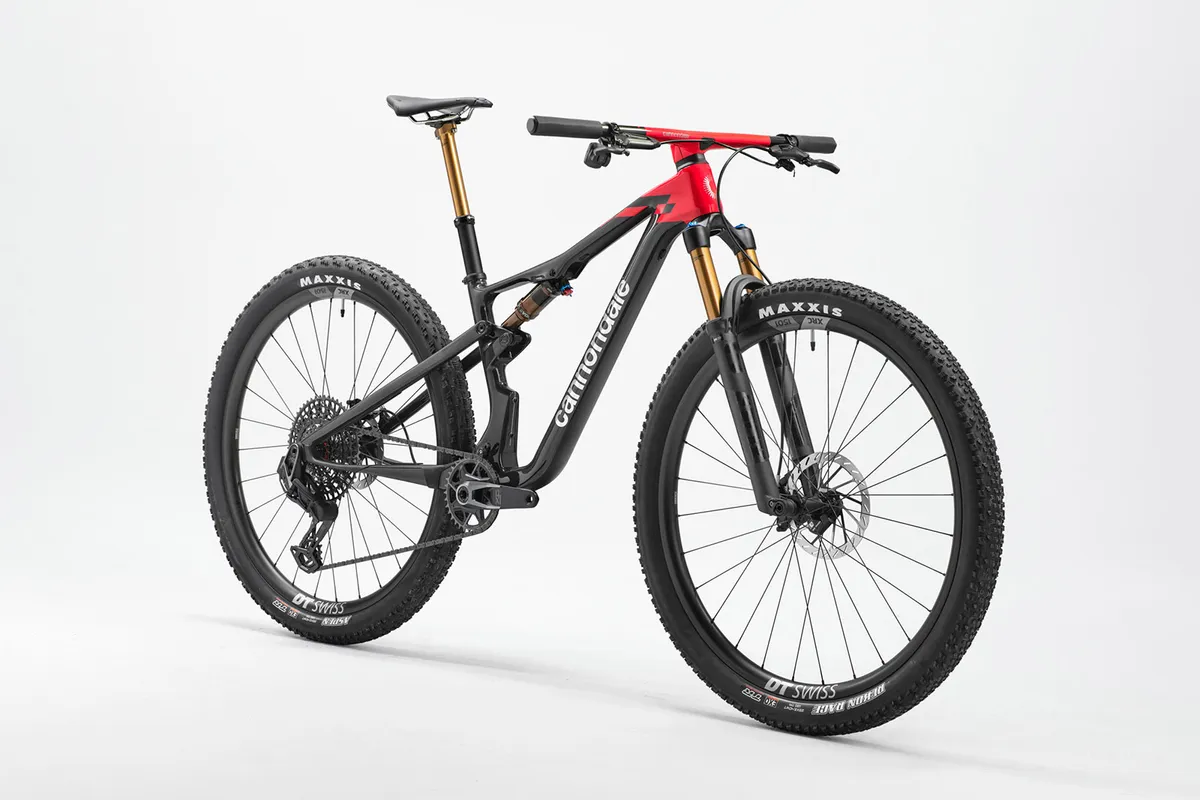
Cannondale is running two sets of build families for the Scalpel, with a range of North American models and a Rest of World family.
US customers’ bikes will come with traditional two-legged forks, unless you opt for the Lefty-equipped Lab71. The rest of the world has Lefty options in some models.
Likewise, outside of the Lab71, none of the North American builds come with a fork lockout, while the rest of the world versions do.
This, apparently, is due to market preferences.
As a result, there are quite a few options, so we won’t cover the full range of specs here.
Cannondale Scalpel Lab71
This is the top-end version of the bike, with the Series 0 carbon fibre and a spec list featuring best-of-the-best components.
The spec includes SRAM’s XX SL AXS Transmission, the carbon Lefty, a RockShox SIDLuxe shock and DT Swiss XCR 1200 carbon hoops.
- £10,000 / $14,000 / €12,999
Cannondale Scalpel 1
This is the top-end of the non-Lab71 bikes, featuring the Series 1 carbon frame.
It still has a very high-spec build, with an XO AXS Transmission, carbon Lefty, carbon DT Swiss XCR 1501 wheels and Cannondale’s integrated bar and stem.
The North American build gets a Fox 34 StepCast fork and Fox Float shock, instead.
- £8,550 / $9,500 / €9,499
Cannondale Scalpel 2
Next down is the Scalpel 2, which comes with both Lefty and RockShox SID builds. You either get the alloy Lefty or Select+ fork and shock.
It comes with a SRAM GX Transmission and Cannondale's HollowGram carbon wheels.
- £6,750 / $6,500 / €7,499 (Lefty) , €6,799 (SID)
Cannondale Scalpel 3
At this level, you receive a Select-level RockShox SID fork, with no Lefty option.
The drivetrain comes mostly from Shimano's Deore range, while the wheels are built around Stan’s Crest alloy rims.
- £4,950 / €4,999
Cannondale Scalpel 4
This is the entry-level Scalpel, again with a basic RockShox SID fork and Deore-based drivetrain.
Slightly cheaper wheels and components bring the price down.
- £3,950 / $4,000 / €4,299
